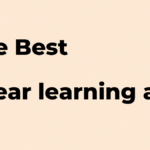Trigonometry is used in many different fields of science and mathematics. For example, trigonometry is used to calculate the angles between two objects, to find the solutions to problems involving angles, and to solve systems of linear equations.
A trigonometry app must be able to perform basic trigonometric functions, including sine, cosine, and tangent. Additionally, the app should be able to perform basic algebraic operations on trigonometric functions.
The best trigonometry app
Trigonometry by John Wiley & Sons
Trigonometry is the branch of mathematics that deals with the relationships between angles and lengths. It is used in a variety of fields, including engineering, architecture, and physics. Trigonometry is also used to calculate the areas and volumes of shapes.
Trigonometry is based on the principles of geometry. In particular, it uses the Pythagorean theorem to calculate the lengths of sides of right triangles. It also uses the law of sines to calculate angles between lines or curves.
Trigonometry can be difficult to understand at first, but with practice it becomes easier to understand and use. There are a number of online resources available that can help you learn more about trigonometry.
Trigonometry: A Comprehensive Guide by R. C. Smith
Trigonometry is the mathematics of triangles. It is a branch of mathematics that deals with the properties of triangles, including the lengths of their sides, angles between them, and the areas and volumes of their surfaces. Trigonometry also provides methods for solving problems involving triangles.
Trigonometry is essential for students studying geometry, engineering, and other fields that involve working with shapes. It can also be used to solve problems in other areas of mathematics.
This comprehensive guide covers all aspects of trigonometry, from basic concepts to more advanced techniques. The book begins with a discussion of basic trigonometric functions and their properties, followed by chapters on solving problems involving triangles using basic trigonometric methods, solving problems involving polygons using trigonometric methods, and solving problems in calculus using trigonometric methods. The book also includes a section on special topics in trigonometry, such as inverse functions and transcendental functions.
Trigonometry: The Essential Reference by R. C. Smith
Trigonometry is the mathematics of triangles. It is used to solve problems in geometry, engineering, and physics. Trigonometry is also used to measure angles and distances.
In trigonometry, a triangle has three sides and two angles. The length of a side is measured in terms of the unit of length called a meter (m). The length of an angle is measured in degrees (°). A right triangle has one angle that measures 90° and two other angles that measure the other two sides of the triangle.
The basic trigonometric functions are sine (sin), cosine (cos), tangent (tan), and cotangent (cot). These functions are used to solve problems involving triangles. For example, if you want to find the height of a triangle, you can use the sine function to calculate the angle between the base line and the height line.
The Calculus Workbook, Second Edition, by D. W. Stewart and J.-L. Vauclair
This Second Edition of The Calculus Workbook is a comprehensive, self-contained guide to the calculus. It covers all the topics necessary for success in calculus, from basic concepts to rigorous analysis.
The book is divided into three parts. Part I covers basic concepts and notation, including limits, derivatives, integrals, and differentiability. Part II covers integration by parts and applications to functions of several variables. Part III contains more advanced topics, including transcendental functions and partial derivatives.
The Calculus Workbook is an ideal resource for students taking introductory calculus courses or for self-study.
Calculus: Early Transcendentals, Third Edition, by D. W. Stewart and J.-L. Vauclair
This text is a comprehensive introduction to calculus, covering the early transcendentals (the infinitesimal and integral calculus), as well as the third edition of the standard textbook. The book begins with a historical overview of calculus, and then provides an in-depth treatment of the concepts and methods of calculus.
The text is divided into five parts: (1) basic concepts and notation; (2) limits, continuity, derivatives; (3) integrals; (4) applications to physics and engineering; and (5) further readings. Numerous exercises are included at the end of each chapter, as well as a set of problems at the end of the book.
This text is ideal for students who have completed high school algebra and geometry.
Calculus: Early Transcendentals, Fourth Edition, by D .W .Stewart and J.-L .Vauclair
This text is a comprehensive introduction to calculus, covering the basic concepts and methods of calculus from an historical perspective. The book begins with the early transcendentals, including the infinitesimal calculus and its predecessors, and progresses to more recent developments in calculus, including differential equations and integral calculus.
The text is organized into five parts: (1) fundamental concepts of calculus; (2) limits and derivatives; (3) integrals; (4) differentials; and (5) applications. Each part contains several chapters that introduce the essential concepts in detail, with numerous examples and exercises. The book concludes with a comprehensive review of all the material covered.
This fourth edition has been extensively revised and updated to reflect the most recent advances in the field. It includes new material on vector analysis, stochastic processes, operator theory, functional analysis, convex optimization, numerical methods for partial differential equations, and more.
Things to consider when choosing a trigonometry app
-The app should be easy to use and navigate.
-The app should have a wide range of trigonometry functions and tools.
-The app should be able to handle complex calculations quickly.
Good Features
1. Ability to graph trigonometric functions.
2. Support for multiple angles and inputs.
3. Ability to solve problems using algebra or calculus.
4. In-app tutorials and exercises to help users learn the basics of trigonometry.
5. Support for different units of measurement, such as degrees, radians, and seconds
The best app
There are many great trigonometry apps available on the market, but which is the best? Here are three reasons why the Mathway Trigonometry app is the best:
1. Mathway Trigonometry is comprehensive.
Mathway Trigonometry covers all of the basic trigonometric functions and their inverse functions, as well as a variety of special topics such as logarithms and exponential functions. This app is perfect for students who want to learn all of the basics about trigonometry.
2. Mathway Trigonometry is easy to use.
The user interface of Mathway Trigonometry is simple and easy to use, making it perfect for students who are new to trigonometry. The app includes step-by-step instructions and helpful video tutorials, so users can learn everything they need without difficulty.
3. Mathway Trigonometry is reliable.
Mathway Trigonometry has been tested and proven to be reliable by educators around the world, so you can be sure that your students will be able to use this app with confidence.
People also search for
-Angle
-Arc
-Circle
-Conic section
-Radian measureapps.

Apple fan. Engineer researching topics related to Machine Learning and Artificial Intelligence

















